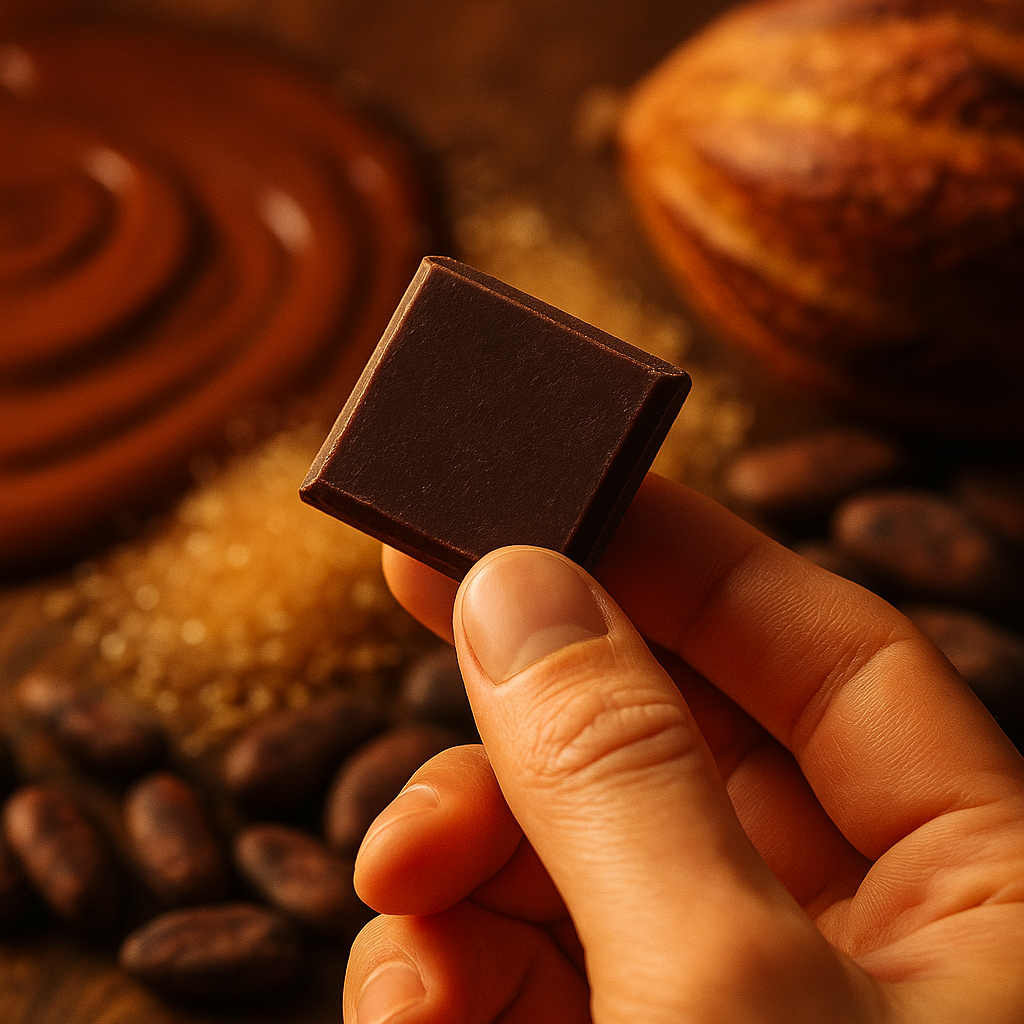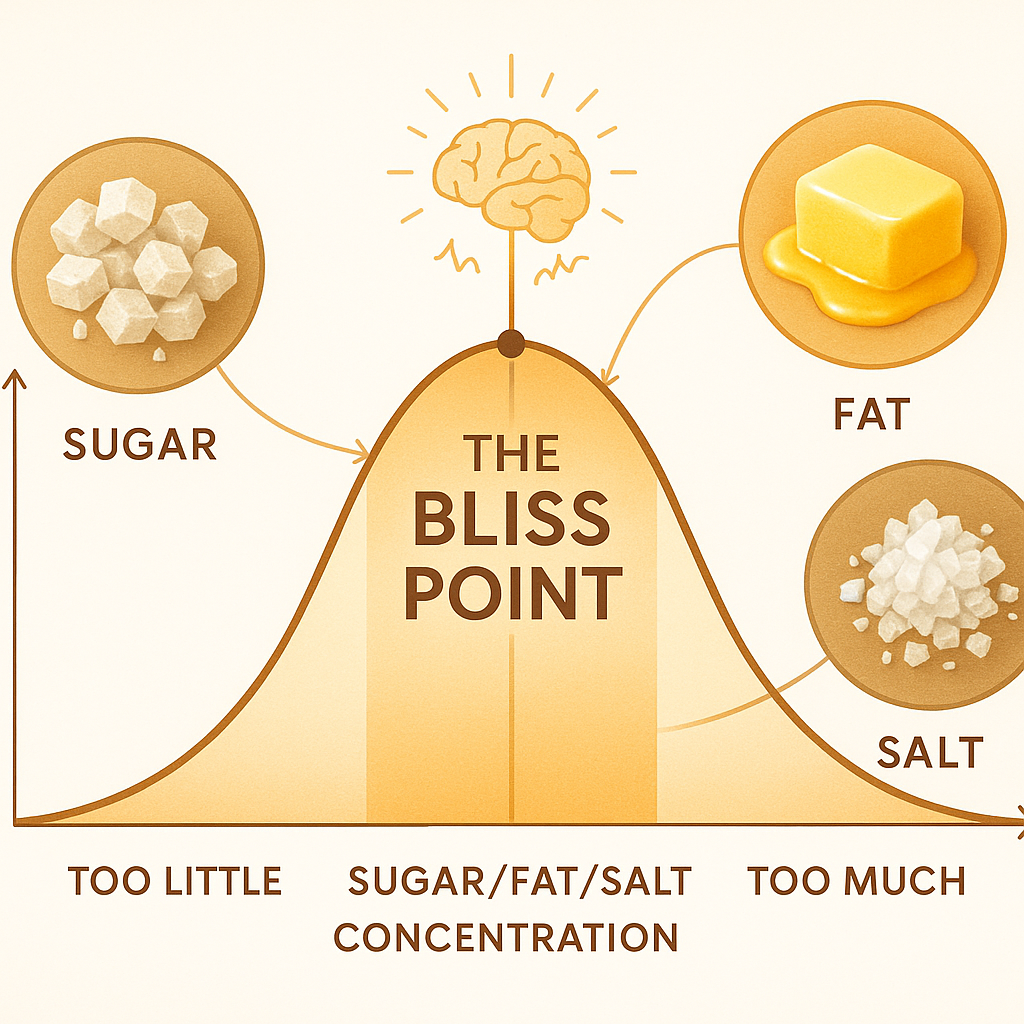Every chocolate maker knows that moment when taste turns into temptation the instant sugar, fat, and flavour align and your brain lights up.
Scientists call it the bliss point the precise ratio that triggers dopamine release and keeps you reaching for more.
The industrial giants have perfected it.
But as small makers, we need to ask a harder question:
Should we exploit that response or rise above it?
1. What the Bliss Point Really Is
The term bliss point was coined by food scientist Howard Moskowitz in the 1980s to describe the balance of sugar, fat, and salt that produces maximum sensory pleasure.
When that ratio is “just right,” dopamine floods the brain’s reward centre (nucleus accumbens), turning eating into hedonic consumption driven by pleasure rather than hunger.
In chocolate, the bliss point typically sits around 30–50 % sugar by weight, depending on cocoa strength and texture precisely where most mass-market milk chocolate sits.
Key Sources:
Moskowitz (1986); Moss (2013) Salt, Sugar, Fat; Kessler (2009) The End of Overeating; Drewnowski (1997) American Journal of Clinical Nutrition.
2. The Ethical Dilemma for Makers
So the real question becomes:
Should we engineer chocolate to hit the bliss point because it sells or design beyond it, because we can?
The Industrial Model Exploiting It
Purpose: maximise craving and repeat purchase
Method: sensory optimisation via sugar, fat, and texture
Outcome: strong loyalty, but overconsumption and dulled palates
Cost: linked to obesity, diabetes, and food addiction
Ethical issue: satisfaction versus manipulation
The Craft Model Avoiding It
Purpose: evoke curiosity, not compulsion
Method: reduce sugar; highlight aromatic cacao and fermentation notes
Outcome: slower, mindful eating; appreciation over addiction
Ethic: celebrate balance and provenance, not chemistry
References: Afoakwa (2010) Chocolate Science and Technology; ICCO Sustainability Briefs (2021)
3. The Middle Path Redefining Pleasure Ethically
Pleasure itself isn’t the problem.
Chocolate should delight not deceive.
We can replace the engineered “hit” with authentic complexity:
Let fermentation aromatics and cocoa volatiles drive pleasure, not sugar.
Use bittersweet contrast to create depth without overstimulation.
Encourage mindful tasting rituals origin flights, storytelling, pairing sessions that engage curiosity and memory, not compulsion.
This is conscious pleasure: pleasure that respects both the eater’s agency and the farmer’s labour.
4. Practical Guidelines for Responsible Makers
| Design Element | Industrial “Bliss” Approach | Responsible Craft Approach |
| Sugar | Maximised for reward response | Calibrated to reveal cacao nuance |
| Fat | Added to saturate mouthfeel | Natural; focus on cocoa-butter quality |
| Flavour | Simplified for intensity | Layered for discovery and learning |
| Marketing | Emotion-driven, craving-based | Story-led, mindful, origin-base |
| Goal | Repeat impulse purchase | Reflective appreciation, sustainability |
5. My Conclusion Pleasure With Integrity
The evidence from sensory science and ethics is clear:
responsible chocolate makers should avoid designing for the bliss point as manipulation.
Instead, design for meaningful pleasure complex, mindful, and rooted in integrity of flavour and origin.
That doesn’t reject joy; it restores agency to the eater and honour to the bean.
That’s the kind of bliss worth chasing.


